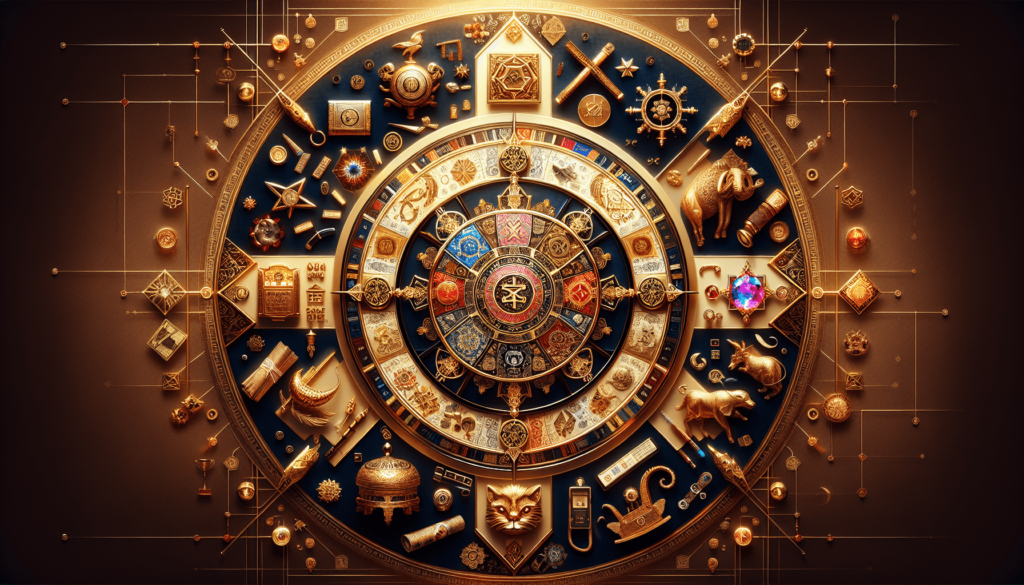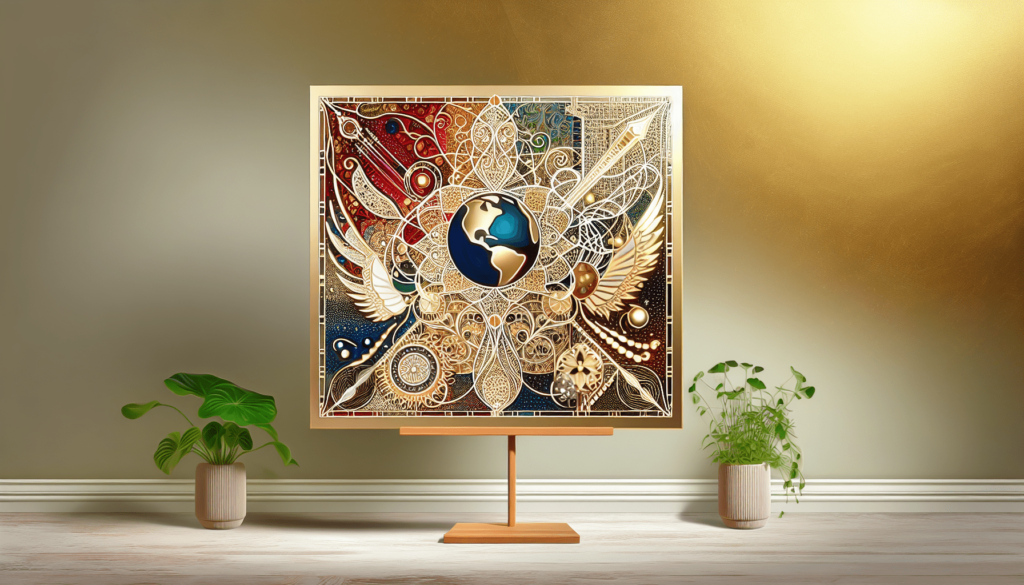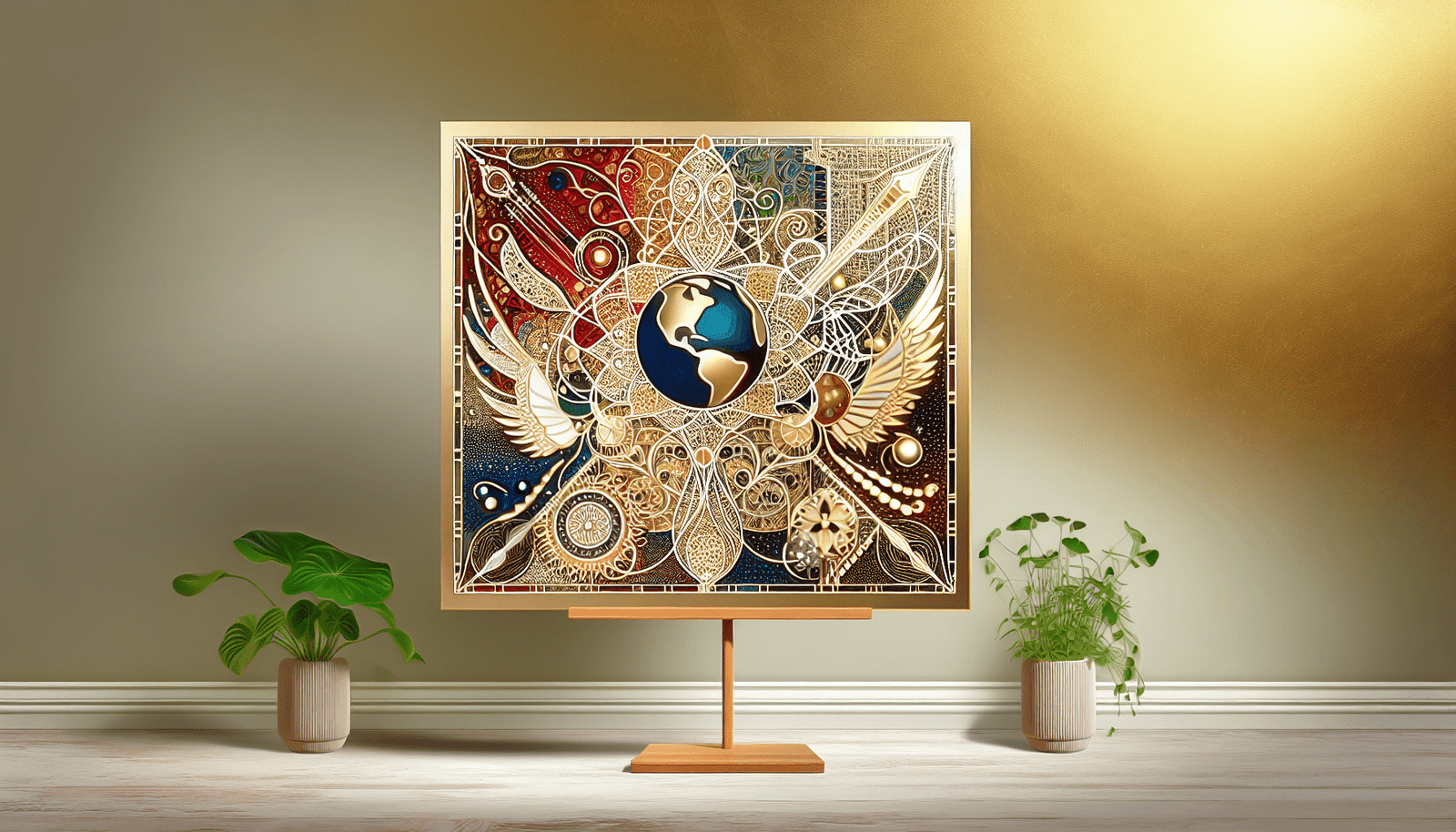Imagine walking into a high-end boutique in New York City, adorned with sleek decor and luxurious merchandise. The opulent atmosphere and exclusive designer pieces may immediately evoke a sense of prestige and indulgence. However, as you travel to a different country and explore another luxury boutique, the concept of luxury may take on an entirely different meaning. This article aims to shed light on the fascinating relationship between culture and our perception of luxury. By delving into various cultural influences, we can uncover the intricate ways in which our backgrounds shape our understanding and appreciation of what is considered luxurious.
Cultural Factors
Values and Beliefs
Culture plays a significant role in shaping our values and beliefs, which in turn influence our perception of luxury. Different cultures prioritize different values, such as individualism, collectivism, spirituality, or materialism. These values ultimately shape what individuals within a culture consider luxurious. For example, in some cultures, simplicity and modesty may be highly valued, leading to a perception of luxury that focuses on quality craftsmanship and understated elegance. In other cultures, opulence and extravagance may be emphasized, leading to a preference for luxury goods that are flashy and ostentatious.
Social Norms
Social norms, the unwritten rules that govern behavior within a culture, also impact how luxury is perceived. These norms can dictate what is considered appropriate or desirable in terms of luxury consumption. In some cultures, luxury may be seen as a symbol of success and achievement, and individuals may feel pressure to display their wealth through conspicuous consumption. In contrast, in cultures that prioritize modesty and humility, excessive displays of wealth may be frowned upon. Understanding these social norms is crucial for luxury brands to effectively target their desired consumer base.
Symbols and Meanings
Symbols and meanings are deeply ingrained in a culture’s collective consciousness and can greatly influence the perception of luxury. Certain symbols or motifs may be associated with specific cultural values or traditions, and incorporating these symbols into luxury products can enhance their appeal to consumers. For example, in Chinese culture, the color red symbolizes luck and prosperity, and luxury brands often incorporate red elements into their designs to cater to the Chinese market. Similarly, in Indian culture, gold is highly regarded and often associated with luxury. By incorporating gold accents or motifs, luxury brands can tap into the cultural significance and appeal to Indian consumers.
Perception of Luxury
Definition of Luxury
The definition of luxury varies across cultures. It is essential to understand how each culture defines and perceives luxury to effectively market luxury products and services. In some cultures, luxury may be associated with material wealth and exclusivity, while in others, it may be linked to experiences, spirituality, or personal well-being. For example, in Western cultures, luxury is often equated with high-end brands and lavish lifestyles. In contrast, in Eastern cultures such as Japan, traditional craftsmanship and attention to detail are highly valued, and luxury is often associated with the pursuit of aesthetic perfection and a sense of harmony.
Emotional Connection
Luxury is not just about material possessions; it often elicits powerful emotions. The perception of luxury can be heavily influenced by the emotional connection individuals have with luxury products or experiences. Culturally specific emotions play a significant role in shaping the perception of luxury. For example, in some cultures, the emotional appeal of luxury may be linked to the sense of social status and the recognition it brings. In other cultures, the emotional connection to luxury may be driven by the desire for personal fulfillment, self-expression, or the satisfaction derived from owning something of exceptional quality.
Status and Identity
Status and identity are closely intertwined with the perception of luxury. Luxury goods and experiences are often used as symbols of social status and serve as a means of displaying one’s wealth and success. In some cultures, the possession of luxury items is seen as an indicator of high social standing, creating a desire for luxury products to signal one’s elite position. Additionally, luxury can also play a role in the construction of individual and group identities. Embracing certain luxury brands or lifestyles can be seen as a way to align oneself with specific cultural or social groups.

Historical Perspectives
Evolution of Luxury
Luxury has a rich history that has evolved over time. The concept of luxury, and what is considered luxurious, has changed as societies and cultures have developed. Historically, luxury was often associated with the ruling classes and the acquisition of rare and expensive materials. However, in modern times, luxury has become more accessible to a wider range of individuals. The democratization of luxury has led to shifts in the perception of luxury, with an increasing emphasis on the experiential aspects of luxury, such as personalized services and unique experiences.
Diverse Luxury Manifestations
Luxury manifests itself differently in various cultures and historical contexts. Each culture has its own unique expressions and understanding of luxury, influenced by factors such as their history, traditions, and values. For example, in ancient Egypt, luxury was closely tied to spirituality and the afterlife, with elaborate burial rituals and the construction of pyramids for pharaohs. In contrast, during the Renaissance period in Europe, luxury was associated with artistic and intellectual pursuits, reflecting a shift towards humanism and the appreciation of beauty and craftsmanship.
Cultural Variations
Eastern vs. Western Perception
Eastern and Western cultures have distinct differences in their perception of luxury. In Western cultures, luxury is often associated with material wealth, individualism, and the pursuit of personal pleasure and indulgence. Luxury is seen as a reward for hard work and success, and it is often displayed and celebrated. In contrast, in Eastern cultures, such as China and Japan, luxury is often linked to traditional values, harmony, and aesthetic perfection. Luxury is viewed as a symbol of social status and can be more subdued and understated.
Regional Differences
Even within a single culture, there can be regional variations in the perception of luxury. Factors such as geography, climate, history, and local traditions can influence how luxury is defined and valued in different regions. For example, luxury preferences may differ between urban and rural areas, coastal and inland regions, or northern and southern parts of a country. Understanding these regional differences is crucial for luxury brands to adapt their marketing strategies and offerings to effectively cater to diverse consumer preferences.

Luxury Consumption Behaviors
Luxury as a Means of Display
One common behavior surrounding luxury consumption is the use of luxury goods as a means of display. In many cultures, individuals use luxury products to showcase their social status, wealth, and success. Displaying luxury items can serve as a form of social signaling and a way to demonstrate one’s affiliation with a particular social group or lifestyle. This behavior is particularly prevalent in cultures that place a high value on material possessions and the external manifestation of success.
Collective Culture and Luxury
In cultures that emphasize collectivism, luxury consumption behaviors may differ from those in individualistic cultures. In collective cultures, individuals may be more likely to consider the well-being of their social group when making luxury purchase decisions. Luxury goods and experiences may be shared and enjoyed collectively, fostering a sense of community and reinforcing social bonds. Additionally, luxury consumption in collective cultures may be driven by a desire to maintain social harmony and avoid standing out too much from the group.
Marketing Strategies
Localization and Customization
To effectively market luxury products in different cultures, it is essential to adopt localization and customization strategies. Localization involves adapting marketing messages, product offerings, and distribution channels to fit the specific cultural preferences and needs of the target market. Customization allows luxury brands to cater to individual customer preferences and create a personalized experience. By understanding cultural nuances and tailoring their strategies accordingly, luxury brands can establish stronger connections with consumers and increase their chances of success in foreign markets.
Celebrity Endorsements
Influencer marketing, particularly through celebrity endorsements, is a popular strategy used by luxury brands to appeal to consumers across cultures. Celebrity endorsements can help create a sense of aspiration and desirability around luxury products. However, it is crucial to select celebrities that align with the target culture’s values and preferences. Working with local celebrities or influencers who are respected and admired by the target audience can enhance brand perception and increase authenticity.
Cultural Sensitivity
Cultural sensitivity is vital for luxury brands to avoid cultural faux pas and navigate the complexities of diverse markets successfully. Understanding and respecting cultural traditions, symbols, and taboos is crucial to avoid unintentionally offending potential consumers. By demonstrating cultural sensitivity and adapting marketing communications to align with the cultural context, luxury brands can establish trust and credibility with consumers, leading to long-term brand loyalty.
Cross-Cultural Influences
Cultural Fusion and Globalization
In today’s interconnected world, cultural influences are increasingly crossing borders, leading to a fusion of cultural elements in the perception and consumption of luxury. Globalization has facilitated the exchange of ideas, traditions, and values, resulting in a more fluid and hybrid perception of luxury. Luxury brands are embracing this cultural fusion by incorporating diverse cultural references and collaborating with artists, designers, and influencers from different backgrounds. This cross-cultural approach allows luxury brands to appeal to a global audience while still resonating with their local target markets.
Adaptation to Local Culture
While cultural fusion is prevalent, luxury brands still need to adapt to the local culture to ensure their offerings are relevant and desirable. This adaptation goes beyond simply translating marketing materials; it involves understanding the underlying cultural values, norms, and preferences and incorporating them into the brand’s identity and products. By striking a delicate balance between global appeal and local relevance, luxury brands can successfully engage consumers and establish a strong presence in diverse markets.
Case Studies
Role of Culture in Luxury Perception
Several case studies highlight the influence of culture on the perception of luxury. One such example is the success of Louis Vuitton in the Japanese market. Through its collaboration with Japanese artists and designers and its incorporation of traditional Japanese motifs, Louis Vuitton has effectively adapted its offerings to align with Japanese cultural preferences. This cultural integration has allowed the brand to establish a strong presence in Japan and become one of the most sought-after luxury brands in the country.
Successful Cultural Integration by Brands
Another noteworthy case study is the success of luxury car manufacturer Bentley in the Chinese market. Bentley recognized the importance of cultural integration and tailored its marketing strategies accordingly. By understanding the Chinese affinity for symbolism and wealth display, Bentley created limited edition models featuring auspicious colors and design elements inspired by Chinese culture. This cultural integration has resonated with Chinese consumers, resulting in strong sales and brand loyalty.
Future Trends
Emerging Markets
As emerging markets continue to grow, they will play an increasingly significant role in the luxury industry. These markets, such as China, India, and the Middle East, have their unique cultural dynamics and preferences that luxury brands must understand and cater to. By recognizing the potential of emerging markets and investing in cultural understanding, luxury brands can position themselves for success in these rapidly developing regions.
Growing Importance of Cultural Understanding
Cultural understanding will become even more critical for luxury brands in the future. As the world becomes more interconnected, consumers are increasingly seeking authenticity and personalized experiences. Luxury brands that can genuinely resonate with consumers by embracing cultural diversity and understanding local nuances will have a competitive advantage. By fostering a deep understanding of cultural influences, luxury brands can better influence the perception of luxury and forge lasting connections with their target consumers.
Conclusion
Recognizing the influence of culture on the perception of luxury is crucial for luxury brands to effectively understand and cater to the varied expectations and preferences of their target markets. Cultural factors, such as values, beliefs, social norms, and symbols, significantly shape how luxury is perceived and consumed. Luxury brands must understand and adapt to regional and cultural differences, embracing localization, customization, and cultural sensitivity in their marketing strategies. By doing so, luxury brands can establish meaningful connections with consumers, drive brand loyalty, and position themselves for success in a global market that values cultural understanding and relevance.
Implications for Luxury Brands
The implications for luxury brands are clear – culture matters. To capture the hearts and minds of consumers, luxury brands must go beyond showcasing their products’ features and benefits. They must embrace cultural influences and leverage them strategically to create meaningful experiences and forge connections with their target audience. By recognizing the power of culture in shaping the perception of luxury, brands can navigate diverse markets successfully, establish brand identity, and maintain a competitive edge in the ever-evolving luxury industry.

